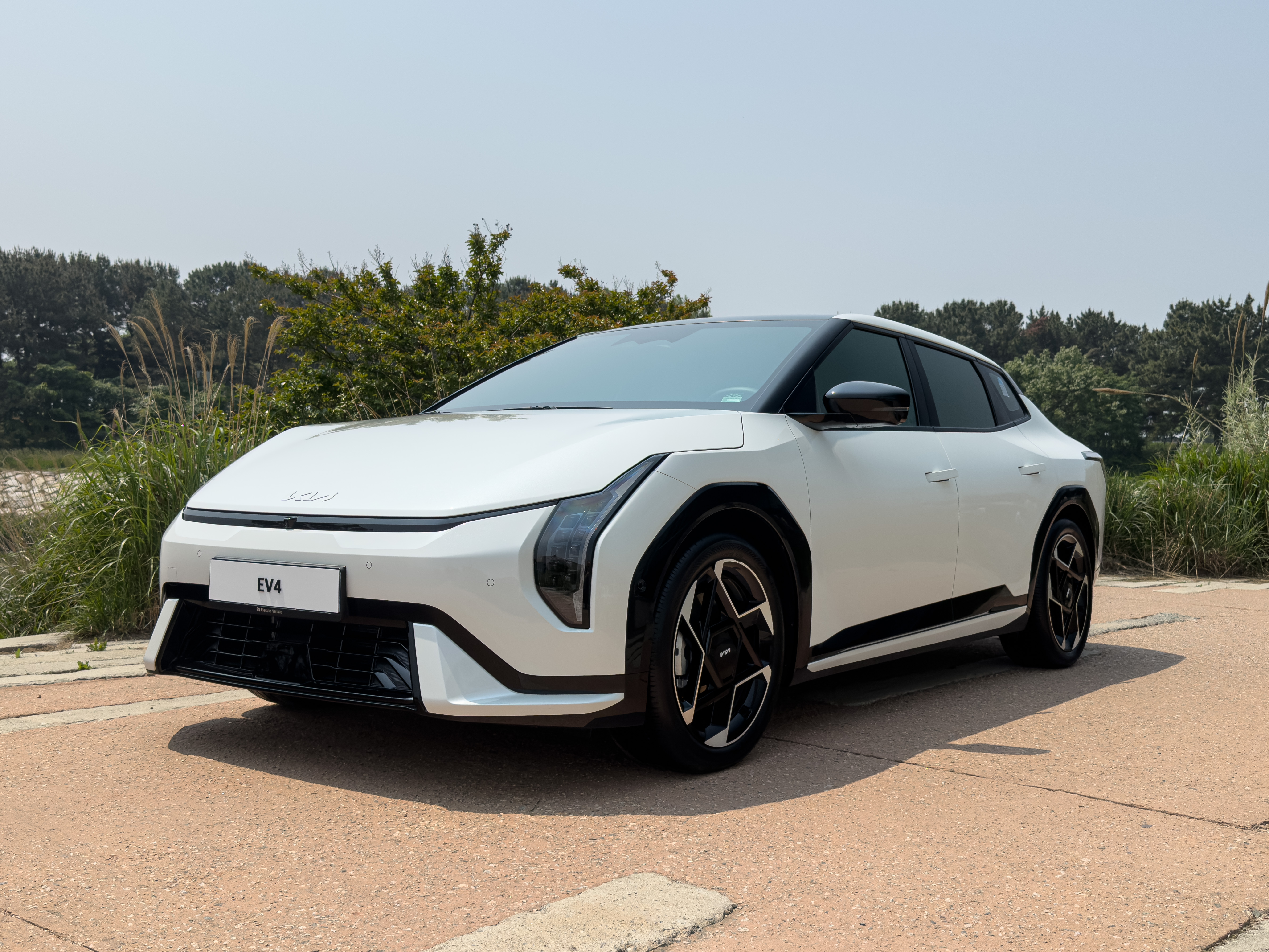Here’s Kia’s new small, affordable electric car: The 2026 EV4 sedan

SEOUL, South Korea—Drive enough electric vehicles from enough different manufacturers and something becomes clear: the Korean automakers know what they’re doing. From small cars like the Niro all the way to three-row SUVs, the EVs coming out of Kia (and its sibling Hyundai) are as efficient as anything out there, usually with a distinctive style. It’s fair to say they’re at the front of the pack, at least as far as EVs offered to North America.
And soon, there will be a new one to consider. It’s the Kia EV4, a small electric sedan that uses a new version of the E-GMP platform that has so impressed us in cars like the EV6. Originally designed for midsize and larger vehicles and operating at 800 V, the E-GMP powertrain is very capable but also relatively expensive to make. Now Kia has taken what it learned with the 800 V experience and applied it to the new 400 V version that’s suitable for smaller and cheaper EVs.
One motor, two packs
Kia told Ars that while the development know-how carried over to the new lower-voltage components, the battery, motors, and power electronics are all new. The car arrives in the US in Q4 of this year and will feature a native NACS charging port. There’s only one motor being offered for now, which generates 201 hp (150 kW) and 209 lb-ft (283 Nm) and drives the front wheels. But there are two choices of battery: the standard 58.3 kWh, which Kia reckons should achieve an EPA range of 235 miles (378 km); and an 81.4 kWh long-range pack, that should be sufficient for 330 miles (531 km) on North American roads. In time, expect a twin-motor, all-wheel drive option, as well as a more powerful EV4 GT.
People will always disagree when it comes to looks, but I dig the futuristicness of it.
Kia
Charging times are good, if not quite on the same level as the more expensive 800 V stuff. A DC fast charger should take the smaller pack from 10–80 percent in 29 minutes, with the larger pack taking 31 minutes to do the same. Plug into an AC charger and 10–100 percent should take five hours and 10 minutes for the standard range car, and seven hours for the longer-range version. And as you’d hope for a model year 2026 EV, it’s capable of acting as a mobile AC power supply (known as V2L), as well as being able to use its charge to power your house (V2H) or send energy back into the electrical grid (V2G), although those last two require a compatible home charger, among other things.
City pacemaker
The EV4’s efficiency is in part thanks to its shape: It’s not the most photogenic car out there, but it can boast a small frontal area and a drag coefficient of just 0.23. Europe will also receive a less aerodynamic hatchback EV4, but that one will only be built in Kia’s Slovakian factory and won’t be exported here. (US-bound EV4 sedans are all built in Korea.)
The elongated and aerodynamic tail gives the car a slightly ungainly look from some angles, but from others, the low nose and angled accents work quite well. It’s recognizable as a member of Kia’s EV family, and there’s some resemblance to the gasoline-powered Kia K4 there as well.
The interior features a number of recycled materials, which add a pleasant texture and visual accents, while also shrinking the car’s footprint ever so slightly. It’s a very spacious interior for a small car—there’s more leg and shoulder room in the back than in a Tesla Model 3 or Polestar 2, according to the specs. The EV4 was clearly benchmarked against those two sedans and mostly outdoes both of them when it comes to luggage capacity, too.
The mesh headrests are a clever touch, as they’re both comfortable and lightweight. The controls built into the side of the passenger seat that let the driver change its position are a specialty of the automaker. There are also plenty of other conveniences, including wireless device charging, 100 W USB-C ports, and wireless Android Auto and Apple CarPlay. We relied on the native navigation app, which is not as visually pretty as the one you cast from your phone to the 12.3-inch infotainment screen, but it kept me on course on unfamiliar roads in a foreign country while suffering from jet lag. That seems worthy of a mention.
Public transport
Traffic in and around Seoul makes a wonderful case for public transport; it provided less of an opportunity for the EV4 to show its stuff beyond relatively low-speed stop-and-go, mostly topping out at 50 mph (80 km/h) on the roads, which are heavily studded with traffic cameras. Determining a true impression of the car’s range will require spending more time with it on US roads, as a result.
It was, however, an easy car to drive in traffic and to drive slowly. It’s no speed demon anyway; 0–62 mph (100 km/h) takes 7.4 seconds if you floor it in the standard range car, or 7.7 seconds in the big battery one. The ride is good over broken tarmac, although it is quite firm when dealing with short-duration bumps. Meanwhile, the steering is light but not particularly informative when it comes to providing a picture of what the front tires are doing.
Good driving dynamics help sell a car once someone has had a test drive, but most will only get that far if the pricing is right. That’s yet to be announced, and who knows what will happen with tariffs and the clean vehicle tax credit between now and when the cars arrive in dealerships toward the end of the year. However, we expect the standard-range car to start between $37,000 and $39,000, undercutting the Tesla Model 3 in the process. That sounds rather compelling to me.
Jonathan is the Automotive Editor at Ars Technica. He has a BSc and PhD in Pharmacology. In 2014 he decided to indulge his lifelong passion for the car by leaving the National Human Genome Research Institute and launching Ars Technica’s automotive coverage. He lives in Washington, DC.














